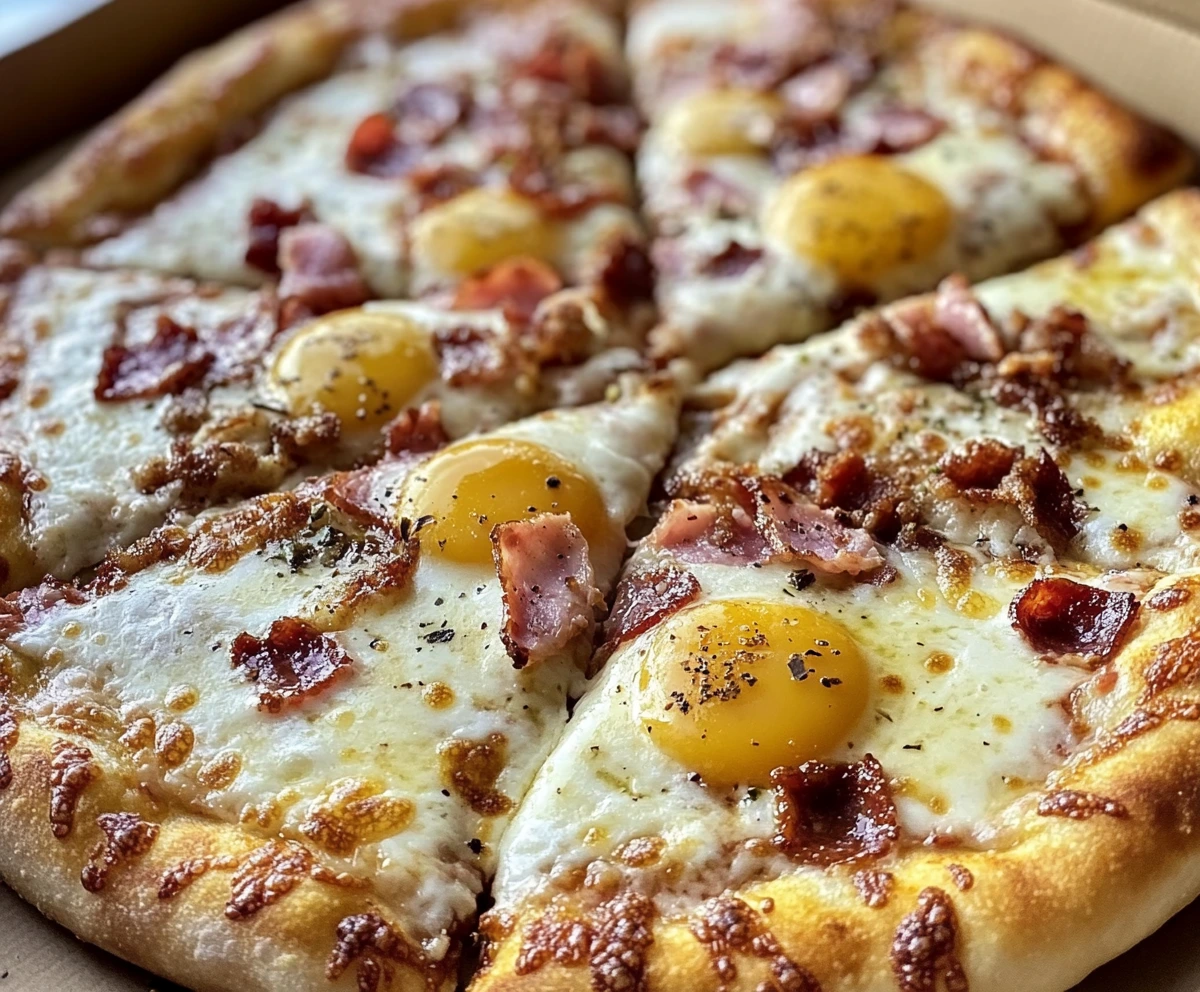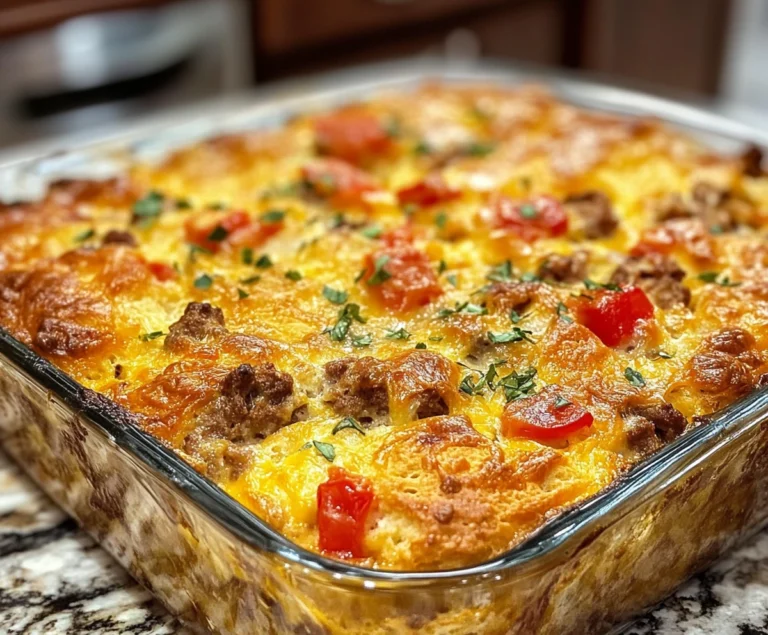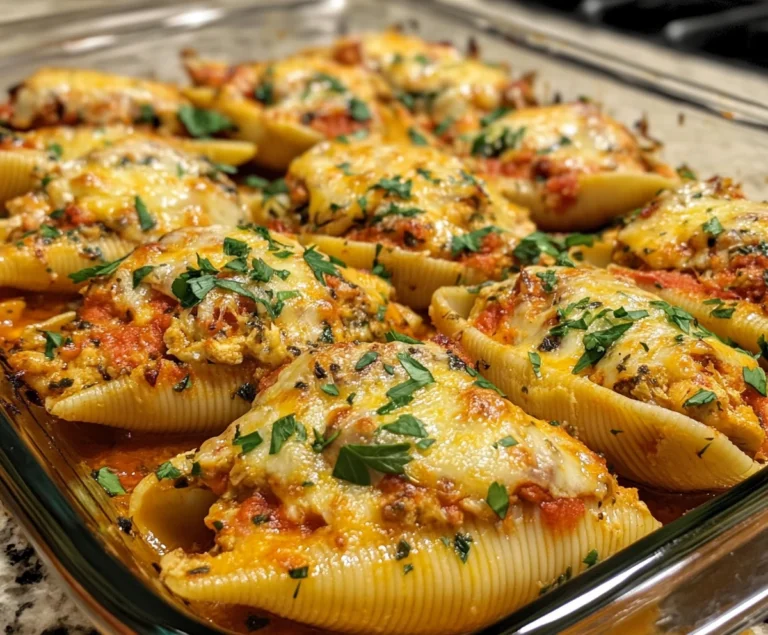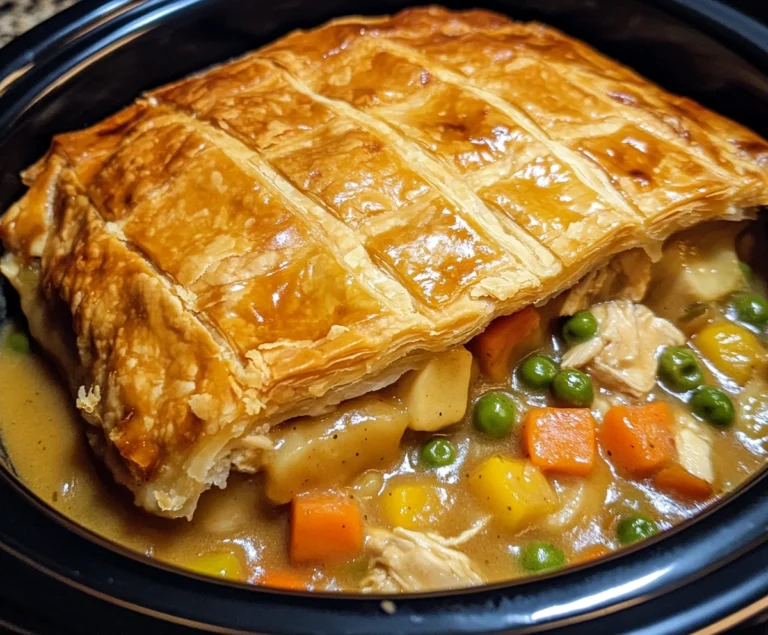What Does Breakfast Pizza Contain?
Breakfast pizza has evolved from a simple weekend treat to a popular go-to dish for busy mornings, brunches, and family gatherings. Its unique combination of flavors — blending the richness of scrambled eggs, the creaminess of cheese, the savory goodness of bacon and sausage, and the versatility of vegetables — makes it a satisfying and adaptable meal that can be enjoyed by all.
In this comprehensive guide, we’ll explore the history, essential components, recipe variations, health considerations, and creative ways to serve breakfast pizza. We’ll also provide practical tips for those looking to make this dish at home, along with linking to related recipe ideas for inspiration.
Table of Contents
- What Is Breakfast Pizza?
- A Brief History of Breakfast Pizza
- Components of a Breakfast Pizza
- 3.1 Crust Options
- 3.2 Scrambled Eggs
- 3.3 Cheese Choices
- 3.4 Meat Toppings
- 3.5 Vegetables
- Step-by-Step Breakfast Pizza Recipe
- Breakfast Pizza Variations
- Health and Nutrition Considerations
- Creative Ways to Serve Breakfast Pizza
- Global Influence of Breakfast Pizza
- Breakfast Pizza FAQs
- Related Recipes and Internal Links
What Is Breakfast Pizza?
Breakfast pizza takes the core concept of traditional pizza but swaps out ingredients typically associated with lunch or dinner for those more appropriate for breakfast. Instead of the usual tomato sauce, mozzarella, and pepperoni, you’ll find toppings like eggs, bacon, sausage, and cheese.
Many versions of breakfast pizza also include vegetables like bell peppers, spinach, or tomatoes, offering a nutritious balance of carbs, protein, and fats. With a flexible foundation — the crust — you can easily make breakfast pizza gluten-free, low-carb, or vegan, depending on dietary needs.
A Brief History of Breakfast Pizza
The concept is relatively modern. While pizza has been a part of Italian cuisine for centuries, its adaptation to breakfast likely began in the United States, driven by the convenience of combining popular items into a single dish.
Traditional pizza made its way to America with Italian immigrants in the early 1900s, but it wasn’t until the rise of the fast-food industry that we saw breakfast pizza appear on menus. By the 1990s, restaurants began experimenting with serving pizza at breakfast, using familiar breakfast ingredients such as eggs and bacon instead of typical toppings like pepperoni or mushrooms.
Continues to grow in popularity, especially in family households and breakfast joints, because it offers a fun, customizable way to start the day.
Components of a Breakfast Pizza
1. Crust Options
The crust is a critical component , as it sets the base for the toppings. Whether you prefer a classic pizza crust, a more buttery crescent roll, or a low-carb alternative, the crust is the foundation that supports the flavors of your toppings. Let’s explore a few crust options:
- Traditional pizza dough: This is the most common option for breakfast pizza. It’s chewy, slightly crisp, and versatile enough to pair with any toppings.
- Crescent roll dough: For a softer, flakier texture, crescent roll dough is a fantastic choice. It creates a buttery, light base .
- Biscuit dough: If you want to add a Southern twist, using biscuit dough is the way to go. It’s rich, flaky, and gives the pizza a hearty base.
- Gluten-free dough: Those with gluten sensitivities can opt for a gluten-free dough. You can easily find pre-made gluten-free pizza crusts in stores or make your own using gluten-free flour.
- Low-carb dough: For those on a keto or low-carb diet, almond flour or cauliflower-based crusts are a great alternative. These options are light and low in carbs, while still offering a delicious base for your toppings.
For those interested in healthier baking options, check out this prune cupcakes recipe as inspiration for incorporating nutritious ingredients into your recipes.
2. Scrambled Eggs
Scrambled eggs are the heart of breakfast pizza. They provide the protein and act as the primary topping that defines this meal as breakfast. Whether you prefer your eggs soft and fluffy or slightly firm, they’re an essential part of the pizza.
- Soft scramble: Cooking eggs on low heat and stirring frequently will result in a creamy, soft texture that pairs well with the other toppings.
- Firm scramble: For those who prefer firmer eggs, cook them over medium heat and stir less frequently to get a more structured topping.
Adding milk or cream to your eggs before cooking can enhance their creaminess, while a sprinkle of salt and pepper elevates the overall flavor. Some variations of breakfast pizza even include eggs baked directly on top of the pizza, which results in a runnier yolk and a richer, indulgent experience.
3. Cheese Choices
Cheese plays a major role in breakfast pizza by binding the ingredients together and adding creaminess. The type of cheese you choose will affect the flavor profile of your pizza:
- Mozzarella: This mild cheese melts beautifully and is often used as the base cheese .
- Cheddar: For a sharper, more pronounced flavor, cheddar is an excellent choice. Its rich, slightly nutty taste pairs perfectly with the eggs and meats.
- Pepper Jack: For those who love a bit of spice, pepper jack cheese adds a kick without overwhelming the other flavors.
- Gouda or Colby Jack: These cheeses offer a smokier, more complex flavor, which complements the other toppings well.
Experiment with cheese combinations to find your perfect blend. For example, mixing mozzarella and cheddar can provide both a creamy texture and a sharp flavor.
4. Meat Toppings
Breakfast pizza is often topped with bacon, sausage, or ham, though there are many other protein options available. Meat toppings add savory richness and make the pizza more filling.
- Bacon: Crisp, salty bacon adds a satisfying crunch and smoky flavor. You can choose to chop it into small pieces or lay whole strips across the pizza.
- Sausage: Whether you prefer breakfast sausage or spicy Italian sausage, this topping adds a flavorful, hearty element to the pizza.
- Ham: A leaner option, ham provides a slightly sweet, savory contrast to the other toppings.
For those following a vegetarian diet, plant-based meat alternatives such as tofu, tempeh, or vegan sausages are great substitutes. These options provide the same rich texture and flavor without the animal products.
5. Vegetables
Vegetables are an excellent way to add color, texture, and nutrients to your breakfast pizza. The options are limitless, but here are some common choices:
- Bell peppers: Sweet and crunchy, bell peppers add vibrant color and a subtle sweetness to the pizza.
- Onions: Onions, whether caramelized or raw, add a savory, slightly sharp flavor.
- Spinach: Fresh spinach adds a nutritious green element to your pizza, providing a good dose of vitamins and fiber.
- Tomatoes: Juicy tomatoes offer a tangy contrast to the richness of the eggs and cheese.
Other vegetables you might consider include mushrooms, zucchini, or even avocado. Adding these ingredients boosts the nutritional value of your pizza and introduces new textures and flavors.
For more ideas on including healthy vegetables in your meals, check out this Mexican cucumber salad, which can be served as a side dish to your breakfast pizza.
Step-by-Step Breakfast Pizza Recipe
Here’s a basic recipe to help you create a classic breakfast pizza at home. Feel free to customize it with your favorite toppings.
Ingredients
- 1 pre-made or homemade pizza dough (or any alternative crust)
- 8 large eggs, scrambled
- 1/3 cup milk or cream
- 1 cup shredded cheese (mozzarella, cheddar, or a mix)
- 1/2 cup cooked bacon or sausage
- 1/2 cup vegetables of your choice (bell peppers, onions, spinach)
Instructions
- Preheat the oven to 425°F (220°C).
- Prepare the crust: Roll out your pizza dough onto a baking sheet and pre-bake it for 7 minutes to prevent sogginess.
- Scramble the eggs: Whisk the eggs with milk, salt, and pepper. Scramble them in a skillet over medium heat until they’re softly cooked.
- Assemble the pizza: Spread the scrambled eggs evenly over the pre-baked crust. Add your cheese, meat, and vegetables.
- Bake for another 7–10 minutes, or until the cheese is melted and bubbly.
- Slice and serve: Allow the pizza to cool for a minute, slice it up, and serve while warm!
Breakfast Pizza Variations
The great thing about breakfast pizza is how easy it is to customize. Below are some popular variations to inspire your next breakfast creation.
1. Mexican-Inspired Breakfast Pizza
For a bold, flavorful twist, try a Mexican-inspired version of breakfast pizza.
Ingredients:
- Chorizo or spicy sausage
- Salsa or pico de gallo in place of traditional pizza sauce
- Black beans or refried beans
- Jalapeños for heat
- Cheddar or Pepper Jack cheese
- Avocado slices or guacamole for topping
Instructions:
- Prepare the crust as usual, but spread a layer of salsa or refried beans on the base instead of scrambled eggs.
- Top with chorizo, black beans, and jalapeños.
- Add a generous sprinkle of cheddar or pepper jack and bake until bubbly.
- Garnish with avocado slices or guacamole before serving.
2. Vegetarian Breakfast Pizza
For a lighter, meat-free option, you can load your breakfast pizza with fresh vegetables and plant-based proteins.
Ingredients:
- Spinach, tomatoes, and mushrooms
- Vegan sausage or tofu
- Mozzarella or vegan cheese
- Olive oil for drizzling
Instructions:
- Prepare the crust and top with a mix of sautéed spinach, tomatoes, and mushrooms.
- Add slices of vegan sausage or crumbled tofu for protein.
- Top with vegan cheese and bake until the crust is golden and the cheese has melted.
3. Sweet Breakfast Pizza
If you’re in the mood for something different, try making a sweet version of breakfast pizza.
Ingredients:
- Cream cheese or mascarpone as the base
- Fresh berries (strawberries, blueberries, raspberries)
- Honey or maple syrup drizzle
- Cinnamon and sugar for extra sweetness
Instructions:
- Use a pre-baked crust and spread a layer of cream cheese or mascarpone over the top.
- Add an assortment of fresh berries and a light drizzle of honey or maple syrup.
- Sprinkle with cinnamon and sugar and bake for 5–7 minutes, just until the berries soften slightly.
This sweet can also serve as a delicious brunch dessert.
Health and Nutrition Considerations
Can be as nutritious or indulgent as you want it to be. Here are some tips for making a healthier version without sacrificing flavor:
Calories and Macronutrients
The exact calorie count of a slice will depend on your toppings and crust. On average, a slice could range from 200 to 400 calories, with higher counts for pizzas loaded with cheese and meat. By choosing healthier ingredients, you can make fit within your dietary goals.
Protein
Scrambled eggs, cheese, and meats like bacon or sausage provide a significant amount of protein, which helps keep you full throughout the morning. Vegetarians can substitute with tofu, tempeh, or plant-based cheeses for a protein-rich, meat-free version.
Healthy Fats
If you’re looking to cut down on saturated fats, opt for healthier fats from avocado, olive oil, or low-fat cheese. Limiting the amount of cheese and using plant-based oils can make the pizza lighter while still being satisfying.
Carbohydrates
The type of crust you choose plays a significant role in the carbohydrate content . For lower-carb options, consider using cauliflower crust or almond flour dough, both of which offer fewer carbs than traditional pizza dough.
Vegetables
Incorporating a variety of vegetables can boost the fiber, vitamins, and minerals . Spinach, tomatoes, onions, and bell peppers are all excellent choices that can be paired with other healthy toppings.
For more ideas on making healthier options, check out this banana zucchini bread recipe, which makes a great accompaniment .
Creative Ways to Serve Breakfast Pizza
Doesn’t have to be a standalone meal. Here are some creative ways to serve it:
Brunch Party
Serve breakfast pizza as part of a larger brunch spread. You can offer several variations of the pizza (sweet, savory, and vegetarian) alongside fresh fruit, yogurt, and pastries. Guests will love the variety, and it makes for an easy, shareable meal.
Pizza Buffet
For family gatherings or potlucks, create a pizza buffet where everyone can customize their own . Set out bowls of toppings like scrambled eggs, cheeses, meats, and vegetables, and let each person build their pizza before baking it.
Mini Pizzas
For a fun twist, make individual using smaller crusts or even English muffins as the base. This is a great option for serving to kids or for portion control.
Breakfast Pizza Rolls
If you’re feeling adventurous, turn into pizza rolls. Roll out the dough, layer it with your toppings, then roll it up like a cinnamon roll. Slice into rolls, bake, and enjoy a portable version .
Global Influence of Breakfast Pizza
While is widely enjoyed in the United States, variations are gaining popularity around the world. Let’s take a look at how this dish is interpreted globally:
Italy
In Italy, the birthplace of pizza, is relatively uncommon. However, many Italian breakfast dishes use similar ingredients, such as frittatas, which are essentially crustless pizzas made with eggs, cheese, and vegetables. Italian-style breakfast pizzas may feature lighter, fresher ingredients like mozzarella, tomatoes, and basil.
Mexico
Mexican cuisine has a rich tradition of breakfast dishes, many of which are now being adapted into breakfast pizzas. A huevos rancheros pizza is a popular variation, with ingredients like tortilla, salsa, black beans, eggs, and avocado. Mexican are often spicy and packed with flavor.
United Kingdom
In the UK, the concept of breakfast pizza has caught on, particularly in casual dining spots and gastropubs. British-style breakfast pizzas may include traditional English breakfast items such as bacon, sausage, mushrooms, and baked beans.
Australia
Australians love their breakfast foods, is no exception. Popular Australian breakfast pizzas might include toppings like fried eggs, tomatoes, avocado, and bacon, with a light drizzle of olive oil and herbs.
Breakfast Pizza FAQs
Q: What is breakfast pizza made of?
A: generally consists of a pizza crust, scrambled eggs, cheese, meat (such as bacon or sausage), and sometimes vegetables like spinach, tomatoes, or onions.
Q: Can I use crescent roll dough instead of pizza dough?
A: Yes, crescent roll dough can be used to give the pizza a lighter, flakier texture. It’s a great alternative for those who want a softer crust.
Q: Can I prepare breakfast pizza the night before?
A: Absolutely. You can assemble the pizza ahead of time, store it in the fridge, and bake it fresh in the morning for a quick, easy breakfast.
Q: How long does breakfast pizza last?
A: Leftover pizza can be stored in the fridge for up to 3 days. To reheat, simply place the pizza in the oven at 350°F (175°C) until warmed through.
Q: Can I freeze breakfast pizza?
A: Yes, breakfast pizza can be frozen. Wrap individual slices in plastic wrap and foil, then freeze for up to 3 months. To reheat, thaw in the fridge overnight and bake in the oven until warmed through.
Related Recipes and Internal Links
For those looking to further expand their breakfast and brunch options, here are some related recipes that pair well with breakfast pizza or offer new ideas for meal preparation:
- Prune Cupcakes Recipe: Healthy and Moist Treat — A healthy cupcake recipe that can be served as a sweet addition to breakfast.
- Mexican Cucumber Salad — A refreshing salad that pairs perfectly with the rich flavors of breakfast pizza.
- Banana Zucchini Bread Recipe — A nutritious bread that makes a great side to your breakfast pizza spread.







